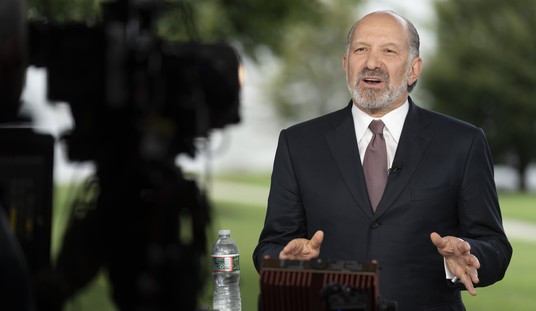As expected, Israel has once again made Benjamin Netanyahu its prime minister. The results were not as positive for him as they might have been but are good enough to reelect him.
While some might find this paradoxical, the results show that Israelis have a basic consensus and yet have very different ways of expressing their political positions. This isn’t surprising given the fact that 32 parties were on the ballot.
First, though, a myth that has at times become a propaganda campaign should be exposed. There were numerous reports in the Western media that the Israeli electorate was going far to the right, didn’t want peace, and that Israeli democracy was in jeopardy. None of this had any real basis in fact and the election results show these claims to be false.
The main story of the election was supposed to be the rise of the far right Ha-Bayit ha-Yehudi Party. In fact, though, it received only about 10 percent of the vote which is usual for that sector. In comparison, about one-third went to liberal or moderate left parties, and about one-quarter to centrist parties.
According to the final vote count, Prime Minister Benjamin Netanyahu’s Likud-Beitaynu list received 31 of 120 seats. The Labor Party made some comeback with 15 but came in third. Labor’s hope that its showing would make Israel a mainly two-party system clearly failed.
The real news of the election is the vast centrism of Israeli voters. The big winner was Yair Lapid’s Yesh Atid with 19; it became the second largest party. Tsipi Livni’s party, Hatnua, obtained 6. The appeal of Lapid and Livni is precisely that nobody really knows what they stand for but it is certainly nothing to either extreme. Kadima received 2, and former army chief of staff Shaul Mufaz will be highly motivated to go into a coalition.
In other words, 27 seats went to vaguely reformist, somewhat centrist, or mildly liberal parties that don’t have any clear or strong stands except to promise better government.
On the far right, Ha-Bayit ha-Yehudi, led by Naftali Bennett, got 11.
On the far left, Meretz obtained 6, while the Communists got 4, the Islamists 5, and the Arab nationalists 3. The last three parties depend mostly on Arab votes and it was a poor showing for that deeply divided sector.
Finally, in the Jewish religious sector, Shas, representing Mizrahi (Middle East-origin and especially Moroccan-origin) Jews, received 11 and the Askenazic (European-origin Jews) Yahadut ha-Torah party received 7. While socially conservative, these parties do not have strong stances on issues other than gaining government support for their communities.
The bottom line is, then, that the old talk of a left and right camp dominating the scene is no longer meaningful given the large centrist vote. And with the moderate left and center-left so divided, they cannot beat Netanyahu.
Israeli politics cannot be understood by analogy with those of other countries. Neither class and economic nor even peace process issues are fundamental in Israeli politics. At present, the critical issue is who will or won’t form a coalition with Netanyahu’s party. Many voted for Lapid with the idea that he would go into a government with Netanyahu and be a moderate influence pushing for more attention to improving domestic infrastructure.
The idea of Netanyahu as a rightist is outdated. That he moved Likud to the center — albeit with a significant right-wing faction remaining — is the secret of his success in gaining two consecutive election victories. The failure of the peace process, the second intifada, the rise of Islamism, and the Palestinian abandonment of negotiations with Israel all have made his broad analysis of the situation acceptable to most Israelis. His opponents focus mainly on stressing dovish credentials rather than offering specific alternatives.
Attention now turns to the question of how Netanyahu can put together a coalition that will hold 61 seats, a majority needed to form a government.
There are several possibilities. Netanyahu never wanted a right-wing government with Bennett. Even if he did, a combination with that party would only get him up to 42 and he would be hard-put to find partners who would join such a combination. Even pulling in the two religious parties would let him reach 60 but he knows that this is a situation that would both cause big international problems and create a situation in which he could be daily blackmailed by threats of his partners to walk out of the coalition.
A coalition with Lapid would be far more attractive and bring him quickly to 50 seats. The problem is that Lapid doesn’t mix with the religious parties, especially Shas. While his party is less explicitly anti-Haredi (what is usually, but wrongly, called “Ultra-Orthodox”) than his late father’s similar party, he still wouldn’t be eager for such a combination.
Since the far left is clearly not a coalition partner and both Labor and Livni have said they would not go into a coalition with him, unless they change that decision, Netanyahu has a problem. The irony is that if Netanyahu would ever be forced to go with Bennett it would be because Labor and Livni left him no alternative.
The easiest way out would be to persuade Lapid to sit with the religious parties or with Bennett. In that case, Bennett’s party would be the smallest of the three partners and thus have far less leverage. Moreover, as a Dati party, Bennett’s party might be willing to cooperate on such things as fewer subsidies for the Haredim and more military service. (This might in turn scare Shas and Yahadut ha-Torah to give lots of concessions to go into the coalition.)
At any rate, tough weeks of negotiations lie ahead to create a coalition after President Shimon Peres designates Netanyahu as having the first option to form a government. He will then have three weeks to do so. One of Netanyahu’s main arguments would be: Join me or I’ll have to depend on the far right and you don’t want that to happen.
Advanced Course
If you are really interested, here are the details:
A. Netanyahu’s decision to combine with Avigdor Lieberman’s party was probably a mistake, driving moderate liberal voters to Lapid. With Lieberman being indicted, his party would have gone into crisis and many or most of its voters would have gone over to Netanyahu without him having to give anything in return.
B. On the right of Netanyahu’s party, he lost probably to Bennett among those who wanted to express their harder-line views or believed that Bennett would pull Netanyahu to the right in a coalition. That might have amounted to 3-5 seats Netanyahu might otherwise have obtained. Still, the much-exaggerated rise of the right-wing failed to materialize, especially when one adds that Bennett’s party is the only one that might be said to directly represent the Dati (Modern Orthodox) sector. In the 2000 elections, the two small, far-right parties got 9 seats, comparable to Bennett’s 11.
C. In the center-left, voters had to calculate whether to vote for Livni, Lapid, or Livni’s old party Kadima. The fact that Lapid is an attractive candidate, seems like a nice guy, and has no record to turn people against him helped his cause. In contrast, Livni is not personally popular and has failed on several occasions.
D. On the left, people had to decide whether they wanted to cast anti-Bibi votes with Labor or Meretz. A Meretz slogan, sniping at Labor, described the party as “your real voice against Bibi.” Wanting to show a tougher opposition stance, a number of people voted for Meretz thus hurting Labor. (One might calculate that as involving two to four seats.)
If Labor becomes the opposition leader, as seems likely, it cannot depend on the close, consistent cooperation of any other party. Shelly Yachimovich, the party’s leader, has already said she would try to block Netanyahu from forming a coalition. (Incidentally, if she succeeded it would lead to new elections in which Netanyahu would probably do better as people voted to ensure a strong government be formed.)
E. Short-lived centrist parties like Lapid’s and Livni’s have been a feature of Israeli politics since 1977. Every such party has ultimately failed after a promising start, with the latest example being Kadima itself which went from a ruling party to virtual oblivion in less than a decade. Lapid’s own father also headed such a party which fell apart without ever accomplishing anything.
F. Arab voting was down and while this may express some dissatisfaction with Israel’s existence, it also means that Arabs have little leeway to affect policies. This is a key reason why Arabs are about 20 percent of the population but only won about 7 percent of the seats, though another is that a lot vote for Zionist parties for various reasons. Arab disunity has also prevented them from becoming more of a political factor. In 2000, with a smaller proportion of the population, the Arab parties elected 12 parliamentarians, the same number as in 2013.
G. As a sign of their social integration, for the first time since the massive immigration from the USSR and ex-USSR in the 1990s there was no party focused on this group, since Lieberman’s party didn’t run separately.









Join the conversation as a VIP Member